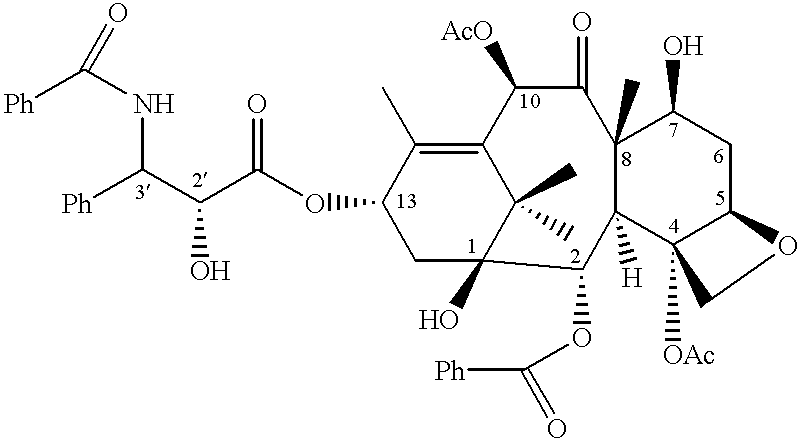Methods and compositions for the identification, assessment, prevention and therapy of human cancers
a technology of human cancer and composition, applied in the field of human cancer identification, assessment, prevention and therapy, can solve the problems of ineffective or less effective therapeutic agents for patients, affecting the treatment effect of patients, so as to achieve the effect of improving the treatment effect, reducing the treatment effect, and improving the treatment
- Summary
- Abstract
- Description
- Claims
- Application Information
AI Technical Summary
Benefits of technology
Problems solved by technology
Method used
Image
Examples
Embodiment Construction
[0242] A. TAXOL
[0243] At least some of the examples set forth below relate to sensitivity to TAXOL. TAXOL is a chemical compound within a family of taxane compounds which are art-recognized as being a family of related compounds. The language "taxane compound" is intended to include TAXOL, compounds which are structurally similar to TAXOL and / or analogs of TAXOL. The language "taxane compound" can also include "mimics". "Mimics" is intended to include compounds which may not be structurally similar to TAXOL but mimic the therapeutic activity of TAXOL or structurally similar taxane compounds in vivo. The taxane compounds of this invention are those compounds which are useful for inhibiting tumor growth in subjects (patients). The term taxane compound also is intended to include pharmaceutically acceptable salts of the compounds. Taxane compounds have previously been described in U.S. Pat. Nos. 5,641,803, 5,665,671, 5,380,751, 5,728,687, 5,415,869, 5,407,683, 5,399,363, 5,424,073, 5,1...
PUM
| Property | Measurement | Unit |
|---|---|---|
| Angle | aaaaa | aaaaa |
| Current | aaaaa | aaaaa |
| Digital information | aaaaa | aaaaa |
Abstract
Description
Claims
Application Information
 Login to View More
Login to View More - R&D
- Intellectual Property
- Life Sciences
- Materials
- Tech Scout
- Unparalleled Data Quality
- Higher Quality Content
- 60% Fewer Hallucinations
Browse by: Latest US Patents, China's latest patents, Technical Efficacy Thesaurus, Application Domain, Technology Topic, Popular Technical Reports.
© 2025 PatSnap. All rights reserved.Legal|Privacy policy|Modern Slavery Act Transparency Statement|Sitemap|About US| Contact US: help@patsnap.com



